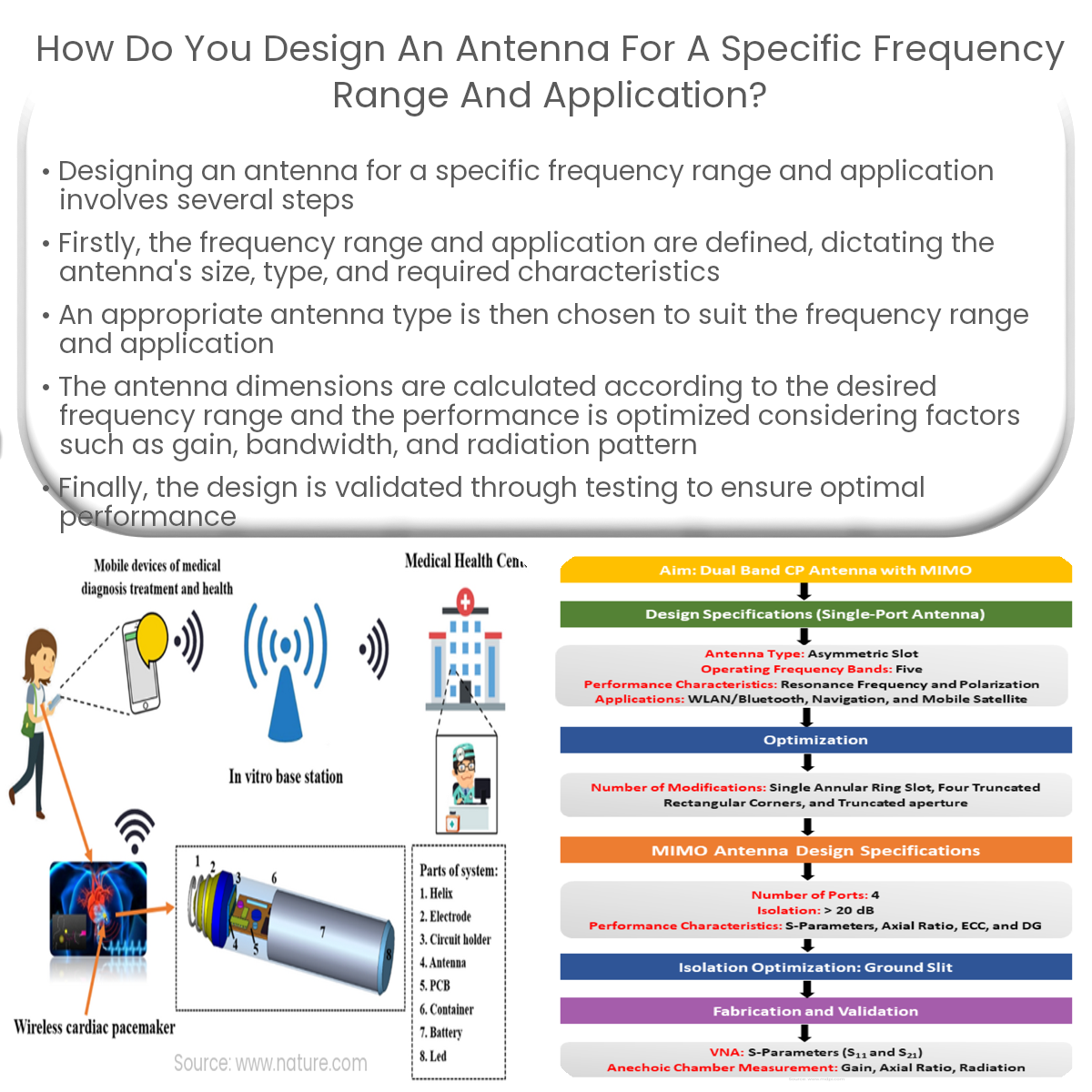Designing an antenna involves defining frequency range & application, selecting antenna type, calculating dimensions, optimizing performance, and testing the design.
Designing an Antenna for a Specific Frequency Range and Application
Antennas are crucial components in wireless communication systems, enabling the transmission and reception of electromagnetic waves. Designing an antenna for a specific frequency range and application involves several key steps. In this article, we will discuss these steps and provide insights into the design process.
1. Define the Frequency Range and Application
Before starting the design process, it is essential to determine the frequency range and application of the antenna. The frequency range will dictate the antenna’s size, type, and performance, while the application will determine its required characteristics, such as gain, polarization, and radiation pattern.
2. Choose an Appropriate Antenna Type
There are numerous antenna types available, each with its strengths and weaknesses. Some common types include:
- Monopole and dipole antennas
- Loop antennas
- Microstrip (patch) antennas
- Yagi-Uda antennas
- Log-periodic antennas
Select the antenna type that best suits the frequency range and application requirements. For example, microstrip antennas are often used in mobile devices due to their compact size and low-profile design, while Yagi-Uda antennas are ideal for high-gain, directional applications.
3. Calculate the Antenna Dimensions
Once the antenna type is selected, the dimensions must be calculated according to the desired frequency range. The antenna’s dimensions are directly related to the operating wavelength (λ) and can be determined using various formulas specific to the antenna type. For example, a dipole antenna’s length can be approximated as λ/2, while a microstrip patch antenna’s dimensions depend on the substrate’s dielectric constant and the desired resonant frequency.
4. Optimize the Antenna’s Performance
Antenna performance can be optimized by considering factors such as gain, bandwidth, impedance matching, and radiation pattern. These factors depend on the application and can be adjusted through iterative simulations and prototype testing. Software tools like CST, HFSS, and FEKO can be used to simulate and analyze antenna performance.
5. Test and Validate the Design
Once the antenna design is optimized, it should be tested to validate its performance. This involves constructing a physical prototype and measuring its radiation pattern, gain, bandwidth, and impedance using specialized equipment, such as a network analyzer and an anechoic chamber.
In conclusion, designing an antenna for a specific frequency range and application involves defining the requirements, selecting an appropriate antenna type, calculating dimensions, optimizing performance, and validating the design through testing. With a thorough understanding of these steps, you can create a customized antenna solution tailored to your application’s needs.


